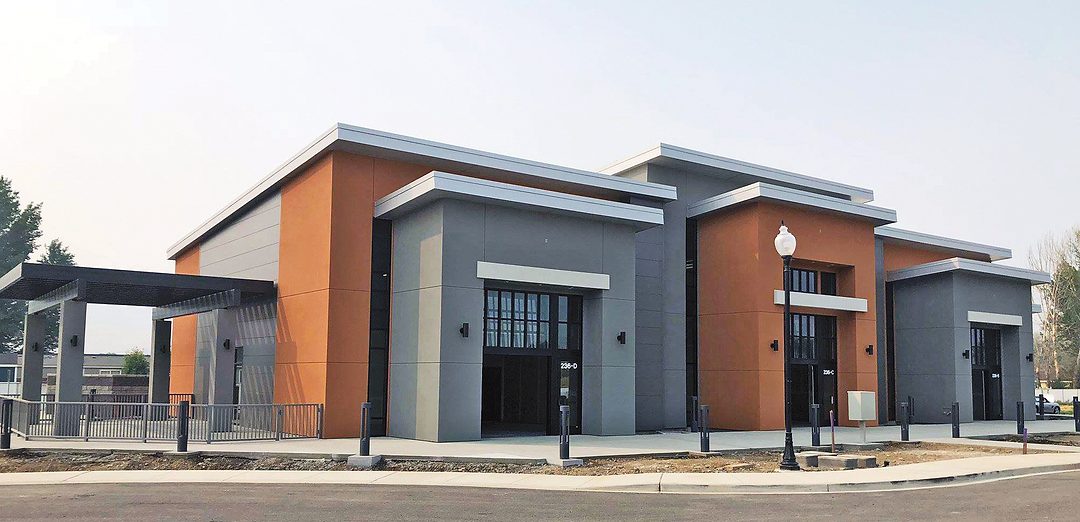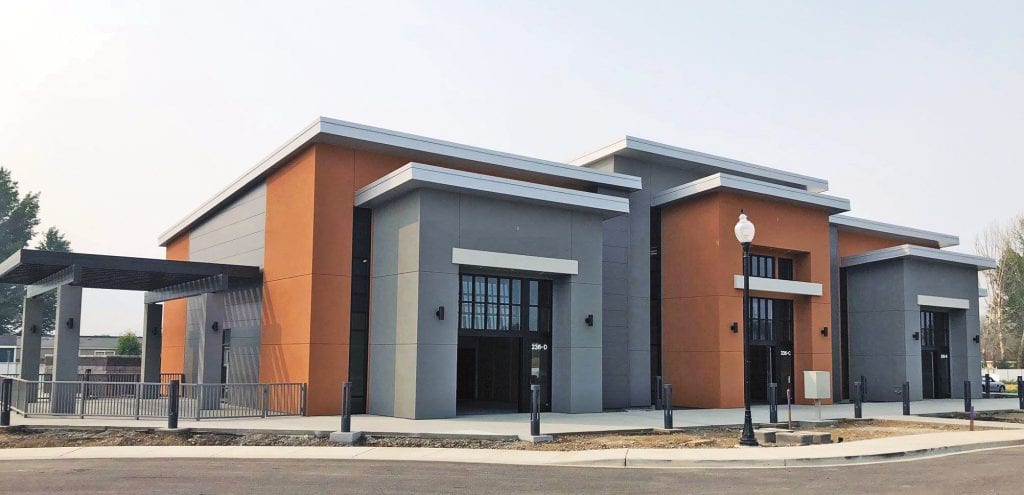
Home » Port of Benton to buy 71.5 acres of light industrial land in north Richland
Port of Benton to buy 71.5 acres of light industrial land in north Richland

October 30, 2018
The Port of Benton celebrated its 60th anniversary in 2018, but Stuart Dezember, the port’s director of finance, said the real celebration will be after the completion of several projects currently underway.
Those include the completion of Chukar Cherries’ expansion and second phase of Vintner’s Village in Prosser, purchase of 71.5 acres in north Richland and the ribbon cutting for Richland Airport’s new archway in 2019.
Benton County comprises the port’s jurisdiction, across which is spread several active port projects supported in part by the $2.4 million collected by the port in taxes per year at 40 cents per $1,000 of assessed property value.
It owns roughly 2,700 acres, a number that fluctuates with the acquisition and sale of property to private investors, which helps support new projects.
The port manages a $13.4 million budget, with $7.3 million in the capital budget, the latter of which is a little higher than usual due to two buildings currently under construction in Prosser, population 6,125.
One of the buildings is a $1.8 million, 12,000-square-foot expansion for longtime tenant, Chukar Cherries.
A $100,000 grant from the Hanford Area Economic Investment Fund supported the project.
The port has built several expansions for Chukar Cherries over the course of their 30-year partnership, but this latest will provide additional manufacturing and production space, and include a second-floor mezzanine to house offices for Chukar’s distribution department.
Chukar Cherries will continue to run its retail space, which is a tourist draw for the area.
The second building is the $2.6 million, 9,000-square-foot Prosser Development Building, which is nearing completion and headlines the second phase of the Vintner’s Village development.
The Prosser Economic Development Association will move into one of the spaces and a “well-known winery” is interested in moving to the corner space to open a restaurant with outdoor seating. Its name hasn’t been disclosed.

A startup brewery is in the process of signing for the third space, while one bay remains available for lease, offering the tenant 2,500 square feet, plus a mezzanine level, that increases the size to 4,000 square feet.
“We’re thinking about possibly building a very similar building in Richland somewhere, probably north Richland, because it is a great model,” said Scott Keller, the port’s executive director.
Fourteen more lots are still available.
“As always, we’re partners with the city of Prosser and Prosser Economic Development Association and Benton County to try to spur growth up in that section of our district,” Keller said.
More land in the north Richland area that’s zoned light industrial soon will be available with the port’s purchase of 71.5 acres of former government land, which was transferred with deed restrictions to the port back in 1995 through the Maritime Administration.
The port hopes to complete the $3 million deal by spring 2019. It hopes that owning the land outright will attract mid- to larger-size companies that complement the land’s surrounding neighbors in the Tri-Cities Research District.
“That deed restriction was preventing local private sector investment. Every use, every lease agreement had to have approval from Washington, D.C., and Maritime,” said Diahann Howard, director of economic development and governmental affairs at the port. “So, we believe that this will open up the opportunity for activity to take place that wants to be in and around the research district.”
“There are a lot of people out there … who are a little leery of leased land,” Keller said. “We do have people interested. People who will make investments if they were able to own the land. In fact, we feel that we have enough interest in the land that probably once we purchase it, we can sell enough land to offset the purchase price.
“That’s our goal.”
Also in the research district, two 40,000-square foot buildings on 7.5 acres of prime property between George Washington Way and University Boulevard are scheduled for redevelopment.
With the help of a development group, the port seeks to break up the buildings into smaller, commercial and neighborhood research and development spaces to support the transition of north Richland into a place where people live, not just go to work.
“We hope the redevelopment will start before the end of 2018,” Keller said.
The port also continues to market 700 acres of property near Horn Rapids Road for large users seeking 150-plus-acre parcels, with a focus on attracting clean energy manufacturers and research and development.
The port has been working on phased improvements to the Richland Airport entryway, which are aimed at enhancing and making it more noticeable to support the many corporate fliers and general aviation users who use the facility.
In addition to new landscaping, signage and more, 15 to 20 new 3,000- to 5,000-square-foot hangars have gone in via private investment by airport users, who long-term lease the land.
“They’re making a good contribution to the area. It’s good for them, good for us, good for the airport,” Keller said.
Nearly 1,000 people had the opportunity to experience the improvements firsthand at the port’s inaugural Wings and Wheels plane and car show in August 2018. It featured about 150 cars, including military vehicles, motorcycles, hot rods, antique cars and several aircraft.
Benton City, population 3,405, also has seen some growth, thanks to port projects.
The city’s first Subway restaurant opened over the summer in an older building the port redeveloped and a similar project involving a 2,000-square foot building in downtown Benton City on Ninth Street is underway.
On the recreation side, improvements to Crow Butte Park near Paterson continue as the port embarks on a new master plan with the help of the state Recreation and Conservation Office, which provided a $210,000 planning grant.
An expansion of the existing RV park campground, plus 20 new RV sites around the marina will put boaters closer to the water so they can keep an eye on their vessels while they park their RVs at the site, which will include extra space for boat trailer parking.
“Use has continued to be super strong,” Keller said. “It’s become a very high-demand park for that area and for the whole state.”
Progress continues on the USS Triton Submarine Memorial Park, a part of the Manhattan Project National Historical Park tour route. The port has applied for a state Heritage Grant to fund a $1 million small museum facility there. “It’s a key asset from a tourism perspective,” Howard said.
She said the museum will be “dedicated to the USS Triton, because we have other artifacts that came from the Triton that we need to display.”
The facility will serve the dual purpose of providing access to public restrooms at the north end of the 20-mile-long riverfront trail, which begins at the park.
The port expects to receive a decision on the grant application by spring 2019.
Construction + Real Estate
KEYWORDS october 2018




